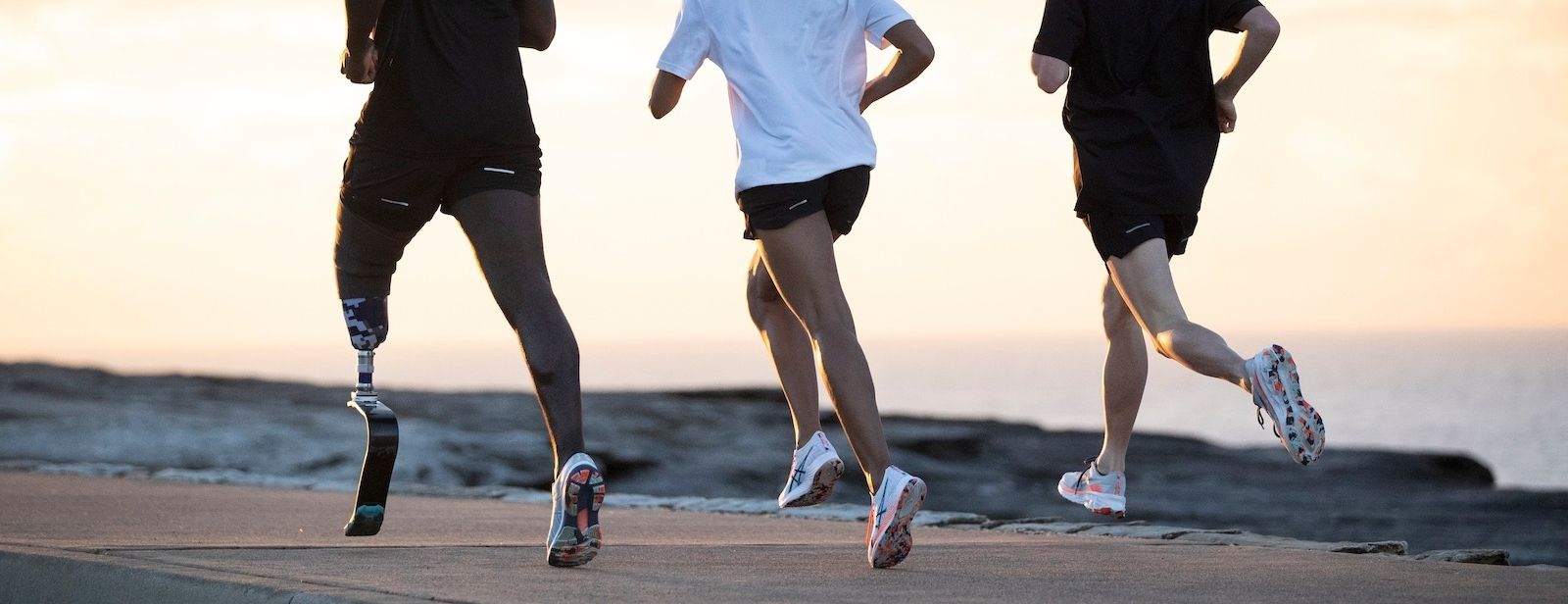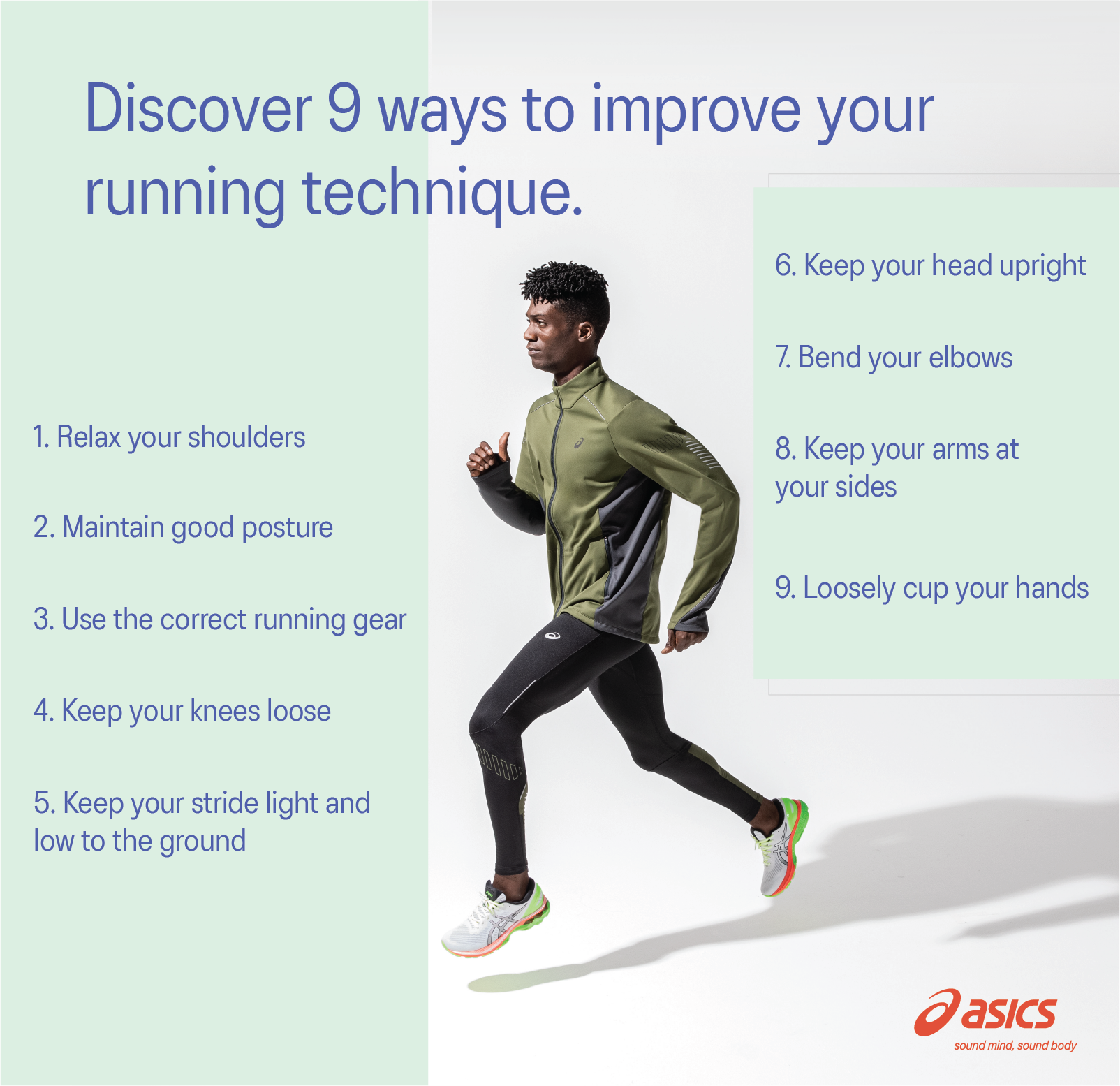
How to Run Properly for Beginners
December 23, 2021
To beginners, the movement may appear deceptively simple, but there’s a lot that goes into it. Proper running form involves your full body, from your head down to your feet. Learning how to fix your running posture can help you avoid injury, soreness, and fatigue — indeed, having even one body part slightly out of alignment can disrupt your run.
If you’re new to running, this may sound like a lot to consider. You may need to rethink every step you’re taking. But with a little discipline and persistence, it can quickly become second nature.
10 ways to improve your running technique
Good technique is critical for many runners. There are many small ways to improve your running technique that could make a big difference. Simple adjustments such as the placement of your shoulders, head, and arms can go a long way toward making you a more efficient runner and less prone to injury. Try to incorporate the following running form tips into your next session:
1. Keep your head upright
Running with your head down can cause severe neck pain or create a bad habit that will be hard to break. Having your neck in this position may strain it, which could be painful later on. “If I notice that I’m falling forward,” FrontRunner member Vicky Ledbury says, “I focus on lifting my head up to help with posture.”
You should be running with your head up, focusing on the ground 3 meters to 4.5 meters in front of you. Doing so will ensure your head is positioned correctly — not to mention you’ll be less likely to run into things.
2. Maintain good posture
Maintaining good posture is very important to your technique. You want to engage your core by pulling in your stomach while simultaneously keeping your torso straight and your shoulders back. Having bad posture while running will not allow your muscles to work properly, resulting in neck, shoulder, and back strain.
3. Relax your shoulders
The positioning of your shoulders is extremely important. Roll your shoulders back and down so that your back is now upright. This position will engage your core and prevent you from leaning over. Leaning too far backward or forward while running may end in a possible injury to your lower back.
4. Keep your arms at your sides
You should not let your arms swing side to side, as this exerts excess energy. Instead, you should strategically place them so they’ll be at your sides swinging back and forth.
Keep in mind that as your arms are swinging, they should be moving opposite of your legs. When your foot comes forwards, the arm corresponding to that side of the body will be going backward. This motion helps balance your body and makes each stride more efficient. “I focus on maintaining a straight posture, relaxed shoulders, keeping my arms at my side, and taking small steps,” says FrontRunner member Tanja Christine Gaivoronski.
5. Bend your elbows
In order to run properly, you need to have a bend in your elbows. Keeping your elbows between a 70-degree and 110-degree angle can have a positive impact on the way you run by helping your body stay in balance. Bending your elbows within this prescribed range of motion will also aid in taking some pressure off your legs and hips.
6. Loosely cup your hands
There’s something to be said for doing what you’re comfortable with, but you should also be aware of what could possibly be slowing you down. Having your hands clenched while running can be extremely draining. This could make your run shorter and slower.
One of the best running tips is to be relaxed. Let your hands fall into a light cupping position, almost a fist. You want this position to feel natural and comfortable and you don’t want any tension in your hands. Having your hands loosely cupped should help you conserve energy and maintain your pace. Little adjustments such as these can make some of the biggest differences in your running performance.
7. Keep your knees loose
Be conscious of the positioning of your knees while you’re running. Doing this could help your whole body. Some people think that running hurts your joints the most, especially your knees. On the contrary, running is proven to fight arthritis if done correctly.
Keeping your knees slightly raised and loose in every stride will help your legs produce a more fluid motion. This positioning will allow for the knees to absorb the impact of your feet hitting the ground more efficiently.
8. Keep your stride light and low to the ground
When running, your stride should feel easy and light, ensuring each foot strike is taken off of the ball of the foot. This way, you can evenly proportion your weight off of both feet. If you are taking shorter strides, you will most likely land with your legs under your body. This helps to have more balance and control. Having a shorter and lighter stride will overall exert less energy leaving you able to run faster and longer.
9. Be mindful of how your feet strike the ground
When you run, you want to be sure that your foot is landing on the inner part of your arch, closest to the middle of the foot, and pushing off with the ball or front of your foot. This running style will absorb the shock of each step, making it easier to continue running.
10. Use the correct running gear
Utilising the correct running gear is key to running properly. But what’s right for your body may be different than for someone else. Instore at ASICS, a team member will happily fit you for the correct running shoe, supplying your feet with the right amount of cushioning and structure for your specific running motion. Alternatively, read our guide on How to Choose the Right Running Shoe for You. Proper footwear will help to prevent injury and ensure the longevity of your body.
It’s also important to wear the proper clothing. Clothing that’s light and breathable will make your run that much more enjoyable. And when you wear ASICS running gear for men or women, you’ll look great while doing so.

Why is good running form important?
Proper form while running is imperative to injury prevention.
It’s common to settle into the positions that are most comfortable for your head and arms. It’s important that you strive for proper running form, finding that balance between comfort and technique, and if you start with bad habits in your form, they can be hard to break.
A slow runner with correct form is less likely to injure themselves than a fast runner with incorrect form. Running the correct way can prevent soreness, neck and back pain, and foot injuries.
Signs you may have poor running technique
If you haven’t been following the running form tips above, you might have experienced physical problems during or after your runs. The following could be signs that your technique is off:
- Neck or shoulder pain.
- Intense fatigue and soreness.
- Excessive loss of breath.